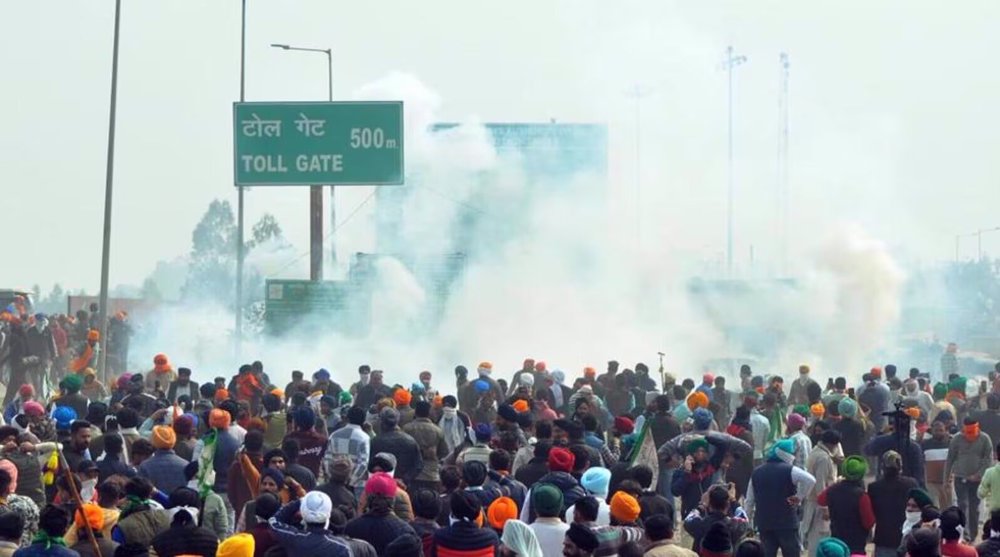Indian Police have fired tear gas to prevent thousands of protesting farmers demanding better crop prices from marching on Delhi.
Indian authorities on Tuesday ringed the capitol by razor wire, cement blocks and fencing on three sides to keep protests at bay, fearing fears a repeat of 2020 when dozens died in a year-long protest that ended only after ministers agreed to repeal controversial agriculture laws.
Multiple laud bangs were heard as the police fired tear gas cans and bang grenades against the farmers assembled at the entry point, in an attempt to drive away protesters from the site.
The police also dropped tear gas shells on the protesting farmer at punjab-Haryana border.
Footage showed forces drawing barriers of barbed wire, placing spikes and constructing cement blocks at the site on Monday, when the forces prepared and conducted drills before the protest began.
The protest, where over 250 farmer unions are participating, called “Dilli Chalo” (let us go to Delhi), came after the farmers meeting with Union government officials brought no outcome to their demands.
“We will move peacefully and our objective is that the government listens to our demands,” Sarvan Singh Pandher, general secretary of the Punjab Kisan Mazdoor Sangharsh Committee, told the ANI news agency.
“We can’t even protest in this country! It is obvious that the lawmakers sit in New Delhi, hence we are marching towards them, were else protesters are supposed to go?” a farmer was quoted as saying in a video.
“This country is being governed by industrialists, not by any political party like BJP or Congress,” said a farmer while speaking to ANI news agency.
“They (industrialists) decide whether a person from a party would rise or decline, in accordance to their profits,” he added.
According to reports, because of the lack of space at local prisons, stadiums have been converted into jails, and internet services have been terminated throughout the vicinity of the area where the demonstrators have assembled.
Out of the several demands of the farmers, they demand the government for the enactment of a law to guarantee a minimum support price (MSP) for crops, to provide a complete debt waiver to farmers, the reintroduction of the land acquisition act of 2013 nationwide, to withdraw from the world trade organization while imposing a ban on all free trade agreements.
Their further demands are to provide pension to farmers and laborers, to scrap the electricity amendment bill 2020, to provide 200 days of employment per year along with a daily wage of 700 rupees, and to ensure rights of indigenous people over companies from plundering tribal land.
Delhi’s iconic Red Fort has been completely shut, surrounded by barricades and containers, in view of the repeat of a siege of the fort which occurred in 2021, amid the rapidly intensifying farmer protests around the national capital.
Traffic in New Delhi, Near Capital Regions (NCR) was heavily affected on Tuesday due to the farmers’ march.
The march comes just months before national elections in India, in which prime minister Narendra Modi is widely expected to win a third term.
Some farmer and trade unions have also announced a countrywide rural strike on Friday.
In 2020, a similar protest at the Singhu border was a sit-in protest by the farmers mainly from the state of Punjab, which later turned violent on the Republic day in 2021 after the farmers stormed the capital, which had become a major challenge for the Modi government.
The farmers along with their tractors broke barricades and stormed into New Delhi, and captured important spots throughout the city, including the Red Fort and its streets.
Dozens died during the protests, mainly because of the heat, cold and Covid.
They ended the protest after the government agreed to abandon controversial agricultural reforms.




